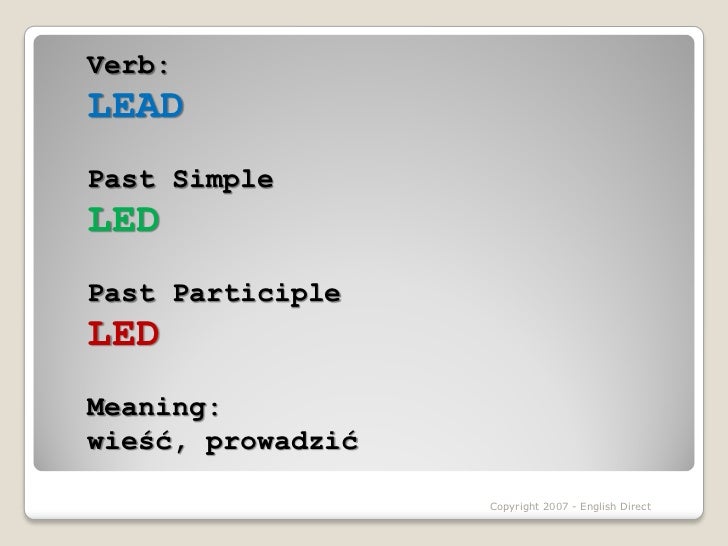

But this only applies to lead as a metal vs. In this case, lead and led are homophones because they’re spelled differently and pronounced the same. However, when lead is a metal, it’s pronounced the same as led. If we’re writing about a leader or the topic of leadership, the word led is simply the past participle form of the verb lead. led in terms of leadership, learning the difference between the terms is simple. We know, it’s kind of confusing, but don’t be discouraged! If we stick to lead vs. The word led is simply the past participle of the verb lead.Īlternatively, lead is also a noun for unrelated subjects like water channels, nail measurements, or British dog leashes and lead-metal objects. The word lead is the imperative and infinitive form of the verb ‘ to lead,’ which is additionally written for the present tense. But, sometimes, the word lead is a noun when it’s used to describe the person who’s in the role of leadership. When it comes to leadership, the words lead and led are merely describing the action of leadership: to lead. Somebody who is a boss, manager, teacher, coach, or representative are all theoretical examples of a leader. Regardless of the context, a leader is a person with a leadership role, where they are in command of others, they construct guidelines, and set an example of the type of standards they enforce. In contrast, leadership is an action and a role where somebody is responsible for other people, places, or things. Outside of the element lead, other metal examples include copper, gold, or silver. Metal is a shiny material that conducts electricity. If you’re discussing the heavy metal lead, the word led is not related whatsoever.

The two ways to understand lead involves whether we’re talking about leadership or metal, which are two separate topics. Lead and led are commonly confused words because the word lead carries two different meanings, and because lead and led are homophones (sometimes).


 0 kommentar(er)
0 kommentar(er)
